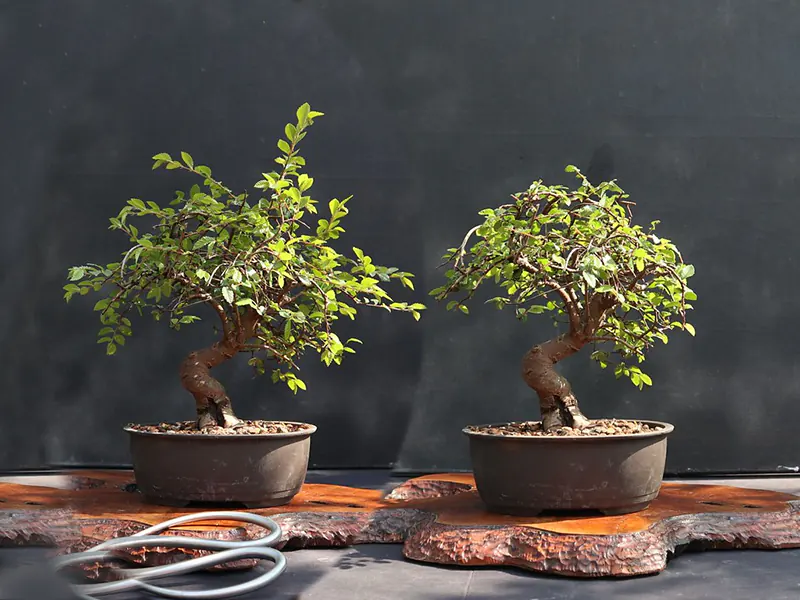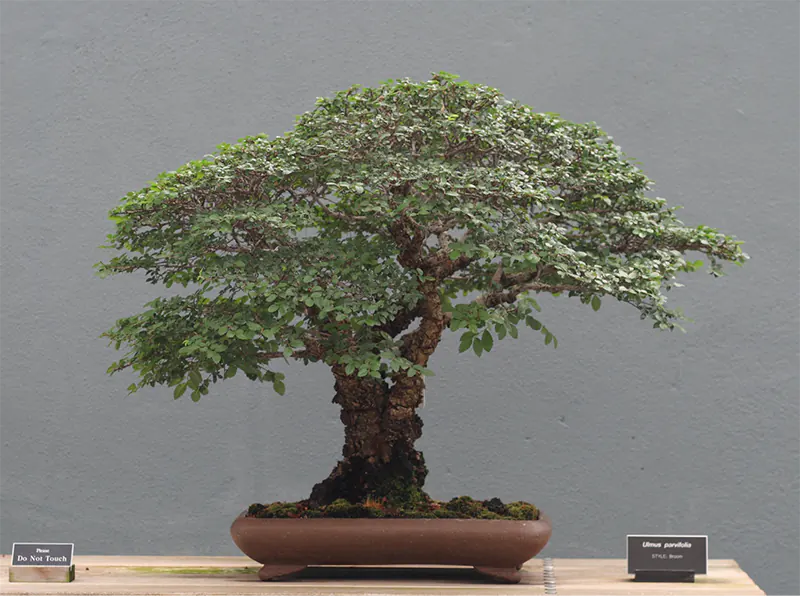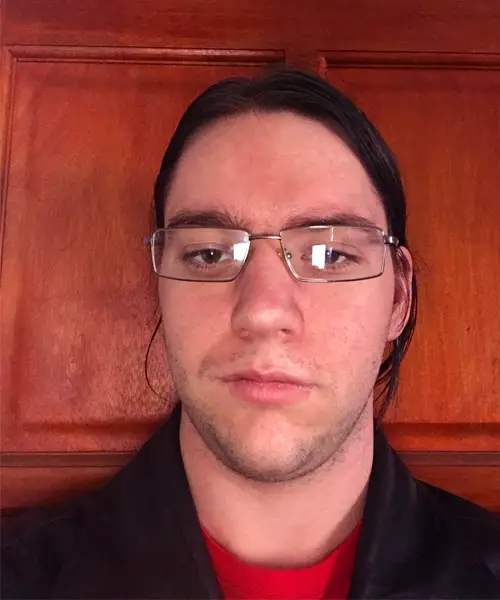Seiju Chinese Elm Bonsai Care Sheet
Ulmus parvifolia
The Seiju Chinese elm is a wonderful tree to grow in your home as a bonsai. It’s a great starter bonsai for newcomers and a beautiful tree to own for experienced growers. The tree is hardy, frost-resistant, and grows well indoors and outdoors.
Image courtesy of Ragesoss | License Details
Here's what you'll find in our Seiju Chinese Elm bonsai guide on this species:
Here's what you'll find in our Seiju Chinese Elm bonsai guide on this species:
01
02
03
04
05
06
Quick Seiju Chinese Elm Bonsai Care Sheet
Here’s a quick guide to caring for your Seiju Chinese elm bonsai.
Recommended soil
A standard mix of soil that is well-draining to keep roots healthy.
Watering
Water every two to three days during spring and summer. Less water is needed when the tree enters hibernation during the colder months.
Potting season
Repot every two years while the tree is young. Afterwards, only repot as needed.
Shaping and pruning season
Shape your tree while young during the spring. Prune as needed during the warmer months.
Light
Requires at least five hours of daily light, can survive in full or partial sun exposure.
Fertilizing
Use plenty of fertilizer during the warmer seasons. Balance your use of solid and liquid options for best results.
Propagation methods
While seeds will work, cuttings are the best option for propagation.
Pests and diseases
Spider mites, scales.
How to Care for a Seiju Chinese Elm Bonsai
Caring for your bonsai tree is essential, as incorrectly watering it, using the wrong soil, or placing it in an area that doesn’t receive enough light can stunt its growth. Here’s the overview of caring for your Seiju Chinese elm bonsai.
Best Soil
The best soil to use when planting or repotting any Chinese elm bonsai is a standard soil mix. The soil needs to drain well to prevent water from hanging onto the tree’s roots. If left wet too long, the roots will become damaged and harm your plant’s overall health.
Watering
Watering your Seiju Chinese elm should be done once every two to three days during the warmer months of summer and spring. This frequency will ensure your tree’s soil has sufficient time to drain and dry with sufficient exposure to the sunlight.
During winter, watering the tree will be less frequent if the plant is placed outdoors and has begun to hibernate.
Repotting
Repotting should be done during the warmer months of the year. Repot into dry, well-draining soil. Ensure you wash the pot thoroughly and dry it before re-inserting the bonsai. Pruning the roots should be done carefully before repotting; use a pencil or chopstick to untangle the roots if needed.
Shaping And Pruning
Shaping and pruning your Seiju Chinese elm should occur during the warmer months. However, if done during the year, the plant will still survive if it has not yet entered hibernation.
Location And Sunlight
The Seiju Chinese elm bonsai will survive in almost any placement, both indoors and outdoors. When placed outdoors, ensure the tree is protected from harsh afternoon sun that can damage it. The tree is resistant to frost during winter but will lose its leaves and hibernate.
If kept indoors, the bonsai will stay evergreen, never losing its leaves as long as the temperature indoors is warm enough.
Ensure the tree receives at least five hours of sunlight a day, but the tree will thrive if it receives more.
Fertilizing
Provide your Seiju elm with plenty of fertilizer to help it grow and stay healthy during the spring and summer seasons. For the best results, you should use a mix of solid and liquid fertilizers.
Propagation Methods
Use cuttings for the best results when propagating your Seiju Chinese elm bonsai. While seeds can work, there is a greater chance of cuttings succeeding for propagation. Using the cuttings will result in the quickest and easiest way to propagate a new bonsai.
Pests And Diseases
Often spider mites and scales will attack a Seiju Chinese elm bonsai. Using the appropriate pesticides and frequently spraying the plant with water will help deter these pests. Lime-sulfur and systemic pesticides can cause the tree to lose its leaves.
Image courtesy of Jerry Norbury | License Details
Considerations for Growing an Indoor Seiju Chinese Elm
Growing a bonsai indoors has many benefits, as it protects the tree from harsh weather and keeps it close when watering and care is needed. However, here are three aspects to consider before moving the Seiju indoors.
Sunlight
The Seiju Chinese elm needs a couple of hours of sunlight each day. As such, you’ll need to place it by a sun-facing window that sees either the morning or afternoon sun. If necessary, you may need to relocate the bonsai throughout the day.
Temperature
The temperature surrounding a Chinese elm will affect whether it remains an evergreen or if it loses its leaves and hibernates during the winter. The tree will remain evergreen as long as the room is kept warm during winter.
Watering Frequency
As you’re moving the tree indoors, it’s likely your watering frequency will occur less often. The soil will dry slower with less direct sunlight, reducing the need to rewater the bonsai.
Common Issues When Caring For a Seiju Chinese Elm Bonsai
You won’t encounter any issues when taking care of a Seiju Chinese elm. However, here are the two main aspects to remember when taking care of this tree.
Overwatering
Chinese elms are highly prone to damage from overwatering. Keep the tree’s soil dry and touch it to check before watering each time. This method will help prevent any damage from overwatering and ensure you don’t underwater the tree.
Sunlight
While surviving in partial and full sunlight, the tree requires at least five hours of light per day. A few overcast days won’t do any major damage to your bonsai; however, if kept indoors or undercover from the sun for too long, it will begin to suffer.
FAQs about Seiju Chinese Elm Bonsai
Here are six frequently asked questions from the bonsai community about the Seiju Chinese elm. These questions will answer any uncertainties from the article and briefly recap some of the main points about caring for your tree.
Caring for your Seiju Chinese elm tree requires watering it every two to three days and giving it at least partial sunlight exposure. Touching the soil each day will help confirm if the mixture is dry and ready to be watered. Overwatering can severely harm your bonsai tree.
Yes, the Chinese elm can grow indoors. There are benefits to both inside and outside placement, but if you’d like to keep the Seiju as an evergreen, a cool room with plenty of sunlight exposure will keep your tree healthy and green all year long.
Chinese elm bonsai can grow as tall as 65 feet. However, reaching this height will take many years of the tree’s lifespan. Most likely, your tree at home will only grow to be a few feet tall.
Shaping a Chinese elm bonsai tree is best done by allowing the tree to grow each shoot a few inches before trimming it down. You should always leave at least four leaves on a shoot to allow easy photosynthesis that keeps the tree alive.
Watering your Chinese elm bonsai should be done once every two to three days during the spring and summer months. You can water less often during the winter months, especially if the tree loses its leaves and begins to hibernate. The best way to tell when your tree needs watering is to touch the soil and feel the dampness. If it’s damp, you don’t need to water yet.
A Chinese elm can easily live between 50 and 150 years if properly cared for; however, this requires a high quality of care.








